RSA is an asymmetric cryptographic algorithm used for encrypting and decrypting messages. It uses a public key for encryption and a private key for decryption such that a message encrypted with the public key can only be decrypted with the corresponding private key. The RSA algorithm involves three steps: key generation, encryption, and decryption. It addresses issues of key distribution and digital signatures.
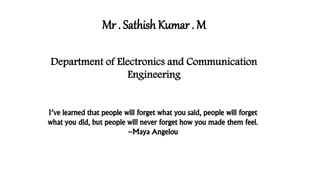

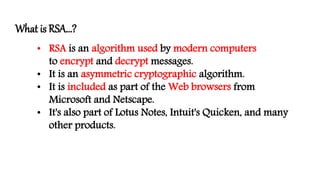



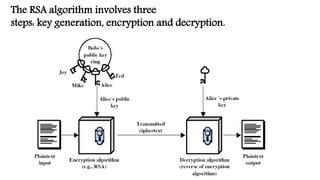
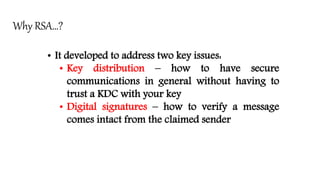

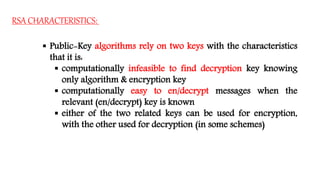







![RSA ALGORITH EXAMPLE
Choose p = 3 and q = 11
Compute n = p * q = 3 * 11 = 33
Compute φ(n) = (p - 1) * (q - 1) = 2 * 10 = 20
Choose e such that 1 < e < φ(n) and e and n are coprime. Let e = 7
Compute a value for d such that (d * e) % φ(n) = 1. One solution is d = 3 [(3 *
7) % 20 = 1]
Public key is (e, n) => (7, 33)
Private key is (d, n) => (3, 33)
The encryption ofm = 2 isc = 27 % 33 = 29
The decryption ofc = 29 ism = 293 % 33 = 2](https://image.slidesharecdn.com/rsa-140831052658-phpapp01/85/RSA-ALGORITHM-18-320.jpg)
